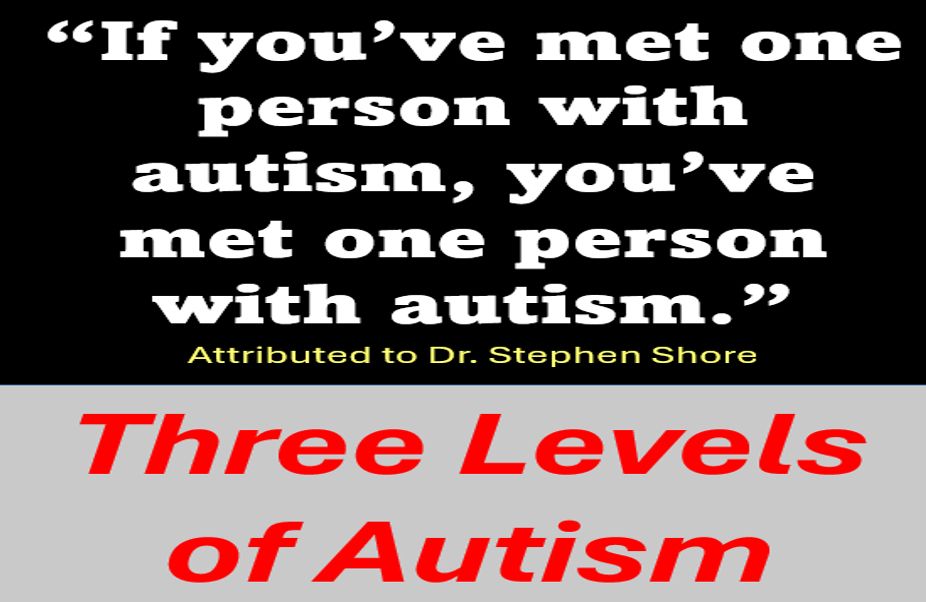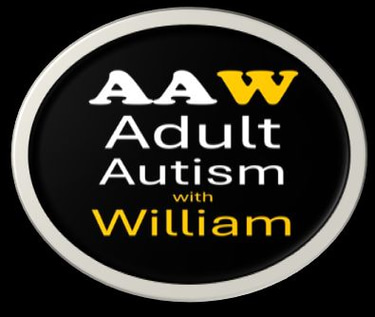Understanding the Three Levels of Autism
A brief description of each of the three levels that a person can be diagnosed.
William O'Flaherty
3/30/20252 min read


“If you’ve met one person with autism, you’ve met one person with autism.” (Dr Stephen Shore)
This expression underscores the notion that no two individuals with autism are the same. Some have similar signs or symptoms, and then there are autistic people who have other diagnosed conditions unrelated to autism. I created this channel to focus on autism spectrum disorder (ASD), Level One, but this video very quickly describes the official three types.
As you can see, the core difference (as understood in 2024) is the amount of support needed. Level 1 Individuals requires support, Level 2 need substantial support and Level 3 requires very substantial support.
Though the images show children, the information applies to adults.
LEVEL 1:
ASD Level 1 is the first of three possible categories a child or adult can be diagnosed on the spectrum. What’s meant by “spectrum?” Most think it’s similar to the “visible light spectrum.” But’s it’s NOT. Instead, viewing it as needing different degrees of support is more accurate. So, words like “mild,” “low” or “high” functioning are generally NOT preferred.
While the amount of support can even vary day-to-day, the reasoning for support being necessary is because of these common characteristics of Level 1:
They might experience challenges around initiating social interactions, display atypical or unsuccessful responses to the social overtures of others and appear to have decreased interest in social interactions, they might experience challenges with organization and planning. Finally, if others interrupt a ritual they might resist or be annoyed it.
LEVEL 2:
ASD Level 2 is the second possible category an adult or child might be diagnosed with. As noted previously, it has to do with how much SUPPORT is needed. This second level grouping requires SUBSTANTIAL support overall. And yet, how that plays out one day may differ than how it is another day. Somewhat like the concept of having “good” and “bad” days.
There are marked deficits in verbal and nonverbal social communication. Even with supports the social impairment is apparent. Initiation of social interactions are limited, along with reduced or even unusual responses to social interactions.
Rituals or repetitive behaviors will appear often enough that it will be apparent to the casual bystander. Besides being annoyed or resisting interruption, their distress or frustration will be more noticeable than level one individuals.
LEVEL 3:
Level 3 is the final category children or adults could be diagnosed on the spectrum. They require the most assistance, specifically the terminology is “requiring very substantial support.” But, as is true for the other levels, the amount of support needed could vary day-to-day. Meaning, they might be able to do something without as much help one moment, but not another.
Common features of level 3 are severe deficits in verbal and nonverbal communication, to the extent that functioning is greatly impaired. Initiation of social interactions is infrequent and responses to social overtures is minimal. There is noticeably interference with functioning because of preoccupations, fixated rituals and/or repetitive behaviors. Additionally, distress is very obvious to others when rituals or routines are interrupted and there is nearly always a quick return to them.
Visit my YouTube channel to watch this material presented:
(click on "YouTube" in the lower right corner to see it there)

